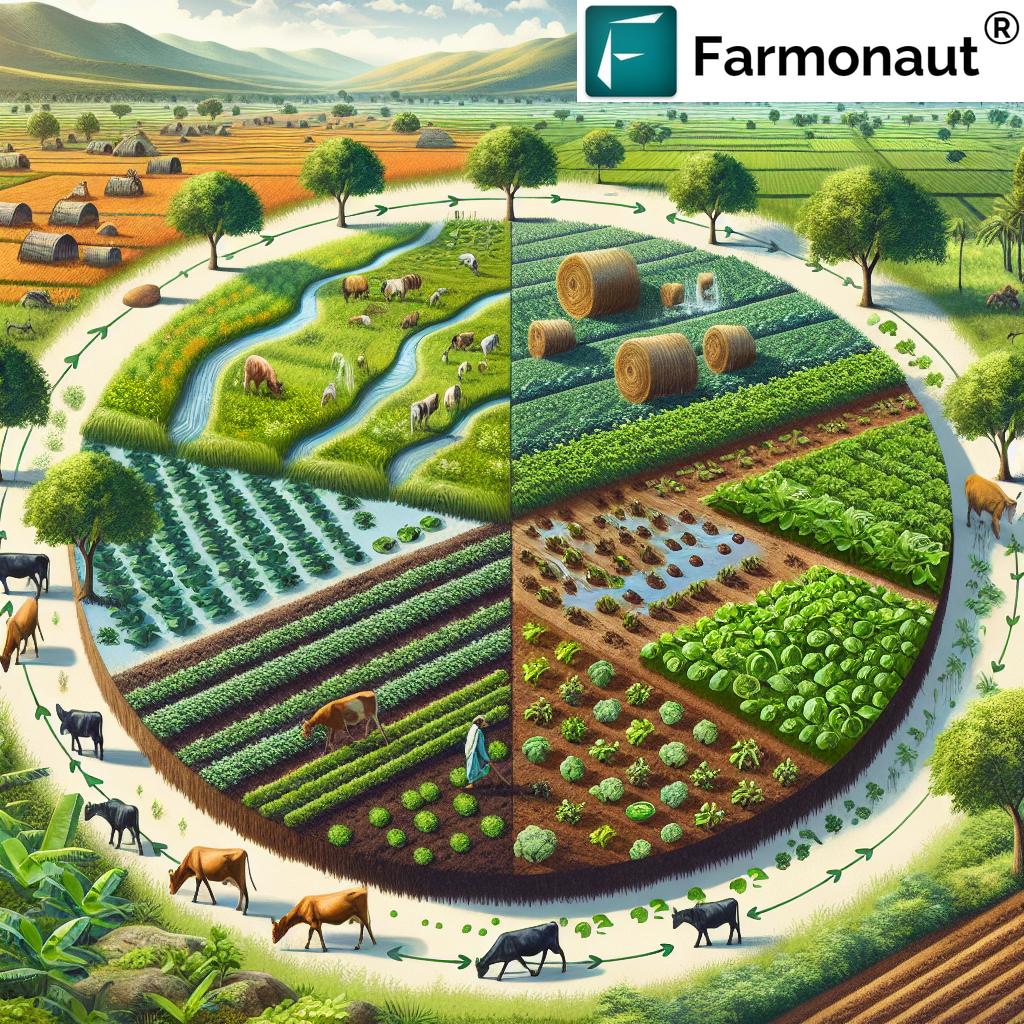Anthracnose on Avocado Leaves: Avocado Tree Climate India & Sustainable Orchard Management for 2025
Introduction: Anthracnose, Avocado, and India’s Climatic Landscape
Avocado cultivation in India has witnessed growing interest in recent years, driven largely by consumer awareness of the fruit’s exceptional nutritional benefits—abundant in monounsaturated fats, vitamins, and dietary fiber. As the domestic and export markets expand, India’s southern regions—like Karnataka, Kerala, Tamil Nadu, and sections of Maharashtra and the North Eastern states—are increasingly adopting avocados into their diversified cropping systems.
However, this boom comes with challenges. Among the significant diseases affecting avocado production in India, anthracnose on avocado leaves stands out as the most destructive. For farmers, orchard managers, and the agricultural supply chain, understanding this fungal disease—alongside avocado tree climate India considerations—is now critical for sustaining and improving yields as we approach 2025.
“Anthracnose can reduce avocado yields in India by up to 30% during periods of high humidity and rainfall.”
Understanding Anthracnose on Avocado Leaves: Biology and Impact
What is Anthracnose and How Does It Affect Avocados?
Anthracnose is a common name for a group of fungal diseases primarily caused by Colletotrichum gloeosporioides, C. acutatum, and related species. It attacks a wide range of plants, but is particularly notorious in avocado due to its aggressive nature and post-harvest destruction.
In avocado cultivation:
- It targets leaves, twigs, and fruits, often initially manifesting as small, water-soaked lesions on the leaf surface.
- These lesions enlarge into irregular necrotic spots, with a dark, well-defined border—a signature symptom for diagnosis.
- Severe infection leads to premature leaf drop, weakened trees, and reduced photosynthetic capacity, ultimately translating into lower yields.
The disease does not stop at foliage. On avocado fruits, anthracnose causes sunken, black lesions that begin as tiny bruises and rapidly expand. The flesh beneath these spots deteriorates, giving rise to post-harvest rot and marketability loss.
Life Cycle: How Anthracnose Thrives in Indian Orchards
Anthracnose thrives in the subtropical and tropical climates common to traditional Indian avocado zones. The pathogen’s lifecycle involves:
- Spore formation in infected leaves, twigs, or fruits.
- Spread via rain-splash and wind, lodging spores into new tissues—especially if the orchard has dense canopy, poor airflow, or excessive moisture.
- Penetration occurs in wounded or stressed tissues, commonly due to pest injury or pruning.
- Incubation and progression are most rapid under high humidity and during warm, wet seasons.
High-density plantations, often observed in southern and North Eastern regions, can further increase disease incidence if proper management is lacking.
Symptoms of Anthracnose on Avocado Leaves and Fruits
Observing early symptoms is crucial for avocado farmers in India to curb disease spread. Here’s what to look for:
- Leaves: Initial small, round or irregular, water-soaked lesions. Lesions enlarge with time, becoming necrotic, brittle, and surrounded by a characteristic dark margin.
- Twigs: Can develop cankers, which may girdle and kill the branch—especially severe in young trees.
- Fruits:
- Unripe: Minor discoloration, sometimes invisible at harvest.
- Ripening/Post-harvest: Sunken, black, or dark brown lesions that rapidly enlarge, leading to soft rot and rapid decay.
The Spread and Risk Factors of Anthracnose in Indian Avocado Orchards
The degree of anthracnose on avocado leaves present in India is closely tied to:
- Humidity and rainfall patterns—critical during monsoons or extended wet spells
- Airflow and canopy density—densely planted or poorly pruned trees.
- Orchard sanitation—failure to remove infected tissues multiplies risk.
- Climatic changes anticipated for 2025 and beyond, with erratic monsoons affecting traditional production windows.
Why Indian Climatic Regions Are Vulnerable
India’s avocado-growing regions can be divided for risk analysis:
- Western Ghats and Coastal Karnataka/Kerala: High rainfall, persistent humidity, and moderate temperatures—ideal for spore germination and aggressive disease spread.
- Tamil Nadu uplands and central Maharashtra: Intermittent humidity, better air exchange; yet, disease flares up with monsoon bursts or irrigation mismanagement.
- North Eastern hills: Subtropical with extended wet spells—potential disease hotspots if canopy and orchard floor conditions are neglected.
Avocado Tree Climate India: Key Considerations for 2025
The successful cultivation and productivity of avocados in India will depend on a nuanced understanding of:
- Temperature Ranges: Optimal for avocados is 16°C to 24°C. Extreme heat, common during Indian summers, can stress trees and increase vulnerability to anthracnose infection.
- Humidity Management: Avocados thrive in moist environments, but excessive humidity—especially around leaf and fruit surfaces—escalates the risk of fungal diseases.
- Rainfall Patterns: Both insufficient and excessive rainfall can trigger issues; the monsoon is a double-edged sword, required for robust growth but notorious for high disease incidence.
- Irrigation Practices: Precise watering—tailored to soil type and season—is essential to avoid waterlogging and leaf wetness, which favor spore germination and penetration into host tissues.
- Climatic Shifts (2025): As per projections, erratic weather events and longer, more humid monsoons are expected to emerge, along with possible increases in mean minimum and maximum temperatures across southern and eastern regions.
With the rising demand for domestic and export avocado markets, addressing climate risks and optimizing orchard microenvironments is key for sustainable yields and disease management.
“By 2025, over 65% of Indian avocado orchards may face increased anthracnose risk due to shifting climate zones.”
Integrated Management of Anthracnose: Sustainable Practices for Indian Orchards
Cultural Practices: The Foundation for Disease Prevention
Effective management of anthracnose on avocado leaves starts with:
- Sanitation: Remove and destroy all infected leaves, twigs, and fruits. Consistent orchard hygiene reduces initial inoculum and further spread.
- Pruning and Canopy Management: Thin the canopy to promote optimal airflow and reduce humidity within the tree perimeter. Post-pruning, always disinfect tools to avoid pathogen transfer.
- Optimized Irrigation: Water at the soil level, not overhead, to minimize moisture on leaves and fruits. Drip systems are more effective in lowering anthracnose incidence.
- Orchard Floor Management: Clear decaying organic matter, improve drainage, and avoid standing water.
Chemical and Biological Control: Fungicides & Beyond
Fungicide application is a crucial step, especially in high-risk periods:
- Utilize copper-based fungicides or systemic fungicides following expert guidance. For organic-certified systems, approved bio-fungicides or natural extracts can be effective during initial lesions.
- Time applications around pre-monsoon and early fruit development stages.
Biological control agents such as Trichoderma or competitive non-pathogenic fungi may help in reducing anthracnose incidence, though their integration is most powerful when combined with cultural practices.
Selecting and Developing Resistant Avocado Varieties
Though India’s varieties are limited compared to more established avocado-producing countries, research is ongoing to identify, select, and propagate disease-resistant or tolerant lines that fare better under local climatic and humidity stresses.
Looking to verify and trace the origin of your avocados, or ensure compliance with food safety norms? Farmonaut’s blockchain-based traceability solution brings cutting-edge transparency to agricultural supply chains—empowering export-oriented growers and processors.
Integrated Pest and Disease Management (IPM): Combining Strategies for Avocado Health
A holistic IPM approach involves:
- Simultaneously addressing pests that cause leaf and fruit wounds, which are entry points for the anthracnose pathogen.
- Scheduled orchard checks for early symptom detection and intervention.
- Intercropping or buffer plants to reduce humidity build-up between trees.
Did you know that satellite-based disease monitoring not only helps reduce losses but also expedites crop loan & insurance assessments for Indian avocado farmers? Real-time verification minimizes risk and improves access to much-needed financial products.
Digital Agriculture Solutions for Disease & Climate Management (Farmonaut Focus)
As the prevalence of anthracnose on avocado leaves rises due to climate volatility and growing demand for avocado production in India, advanced monitoring and resource management technology is a necessity for all-scale orchards.
Farmonaut, a leader in satellite-based agricultural intelligence, offers game-changing tools for the modern farmer:
- Satellite-based Monitoring: Access real-time crop health maps using NDVI and other indices, spotting stress (anthracnose, water, or nutrient) days to weeks before symptoms escalate.
- AI-Based Advisory: Our Jeevn AI system recommends optimum fungicide application windows, irrigation schedules, and canopy management—maximizing disease control while promoting sustainability.
- Environmental Impact Tracking: With Carbon Footprinting Module, Indian avocado farmers can monitor resource use, emissions, and progress toward climate-smart agriculture.
- Blockchain Traceability: Full lifecycle tracking ensures end-to-end transparency from orchard to retailer—meeting both domestic and export market requirements and building consumer trust.
- Fleet & Resource Management: Optimize the movement of agri-machinery, workforce, and harvest logistics—all from a unified interface.
Farmonaut’s platform is available via Android, iOS, Web, and API—making advanced tools accessible to Indian farmers, estates, agribusinesses, and government agencies working toward sustainability and productivity.
Developers and agri-tech solution providers: Integrate advanced satellite, weather, and disease advisories using Farmonaut’s API or get started with our API Developer Docs.
Why Farmonaut for Your Indian Avocado Orchard?
- Affordable, scalable satellite-based solutions—from smallholder to large-scale avocado estates
- Real-time actionable insights—for timely intervention against anthracnose and other significant diseases
- Environmental tracking—to align your operations with sustainability and climate adaptation objectives for 2025 and beyond
Comparative Table: Impact of Anthracnose and Management Strategies for Avocado Orchards in India (2025 Estimate)
| Region/Climate Scenario | Temperature (°C) | Rainfall (mm/yr) | Humidity (%) | Est. Anthracnose Incidence (%) | Impact on Yield (% Loss) | Recommended Sustainable Practices | Effectiveness (Est. % Reduction) |
|---|---|---|---|---|---|---|---|
| Western Ghats (Kerala, Karnataka) | 18-26 | 2000-3000 | 75-95 | 40-60 | 25-30 | Sanitation, dense canopy pruning, targeted fungicides, bio-control agents | 60-70 |
| Central Maharashtra Uplands | 20-28 | 700-1200 | 55-70 | 20-30 | 10-15 | Irrigation control, orchard floor drainage, copper sprays, disease-free plant material | 70-75 |
| Tamil Nadu Uplands | 19-25 | 1000-1800 | 60-80 | 25-40 | 12-18 | Balanced canopy, inter-row grass cover, AI-based irrigation scheduling, organic mulching | 60-70 |
| North Eastern Hills | 15-22 | 1800-2500 | 80-98 | 50-70 | 35-40 | Intensive canopy thinning, strict sanitation, biofungicides, regular NDVI monitoring | 55-60 |
| Arid / Irrigated (Parts of Telangana, Gujarat) | 22-32 | 400-900 | 35-60 | 10-15 | 5-8 | Deficit irrigation, regular pest scouting, windbreaks, resistant cultivars (when available) | 70-80 |
Note: Data represents estimated/potential ranges for 2025 based on current disease and climate research. Strategic combination of sustainable practices provides the highest impact for reducing anthracnose on avocado leaves and optimizing yields.
2025 and Beyond: Sustainable Avocado Production Amidst Climate Challenges
Moving forward, India’s avocado sector can only realize its potential by adopting climate-adaptive farming strategies and prioritizing orchard disease management. Both growers and agri-businesses need to recognize:
- The rising challenge of anthracnose on avocado leaves will be aggravated by high and erratic humidity, shifting rainfall, and the expansion of avocado acreage into new climatic zones.
- Traditional reactive disease control must give way to predictive, integrated approaches—blending proactive cultural, biological, and chemical interventions, backed by digital monitoring.
- Technology platforms such as Farmonaut offer affordable access to satellite-driven insights, AI advisories, and traceability tools—making precision agriculture a reality for every farm stakeholder, from smallholder to large-scale plantation.
Investment in large scale orchard management solutions will be vital, helping Indian farmers monitor, plan, and verify best practices across their entire operation, thereby boosting exports without compromising domestic market quality.
Farmonaut Subscriptions
Unlock the full suite of Farmonaut capabilities to manage climate and disease risks:
Frequently Asked Questions (FAQ)
- What is the main cause of anthracnose on avocado leaves in India?
Anthracnose is primarily caused by the fungus Colletotrichum gloeosporioides, thriving in humid, subtropical environments and spreading through water, rain splashes, wind, and contaminated tools. - How can I identify anthracnose on my avocado tree?
Check for small, water-soaked lesions that enlarge into dark-bordered, necrotic patches on leaves, twigs, and fruits. On fruits, look for black, sunken spots—especially as they begin to ripen. - Why are Indian orchards particularly prone to anthracnose?
Indian avocado orchards often experience prolonged wet spells, persistent humidity, dense canopy cover, and inadequate sanitation, all of which favor rapid anthracnose infection and spread. - What sustainable practices can I implement to reduce anthracnose?
Key practices include regular sanitation, canopy pruning to improve airflow, soil-level drip irrigation, judicious fungicide use, mulching, and selection of tolerant avocado varieties. - How can digital tech like Farmonaut help me manage disease and irrigation?
Through real-time satellite imagery, NDVI crop health maps, AI-powered advisories, and traceability tools, Farmonaut allows disease stress detection, smarter irrigation scheduling, and transparent product tracking—improving disease control and productivity. - Is anthracnose a post-harvest problem in India?
Yes, infections can remain latent until the fruit ripens, resulting in severe market and export losses due to fruit rot. Cooling, rapid transport, and post-harvest fungicides can help reduce loss. - Where can I find Farmonaut’s API or app for integrating disease monitoring?
Visit the Farmonaut API portal or download our apps for Android and iOS for seamless access.
Conclusion: The Road to Healthy, Sustainable Avocado Orchards in India
As we approach 2025, anthracnose on avocado leaves is likely to remain a significant challenge for avocado production in India, compounded by evolving climate conditions, changing rainfall signatures, and a rising demand for safe, sustainable produce.
However, by harnessing a combination of traditional integrated management practices, strict canopy and orchard hygiene, precision irrigation, and the latest digital agriculture innovations—including satellite remote sensing, AI advisories, and blockchain traceability—Indian growers can mitigate risks, improve yields, and secure their place in the expanding domestic and export markets.
For every grower, researcher, and agri-business in India, the path forward means not just fighting disease, but embracing sustainability—ensuring that avocado orchards can thrive for generations to come.
Ready for climate-resilient avocado production? Use Farmonaut for orchard disease monitoring, sustainability tracking, and productivity optimization—as the future of Indian avocado cultivation rises to meet the climate and disease challenges of tomorrow.












